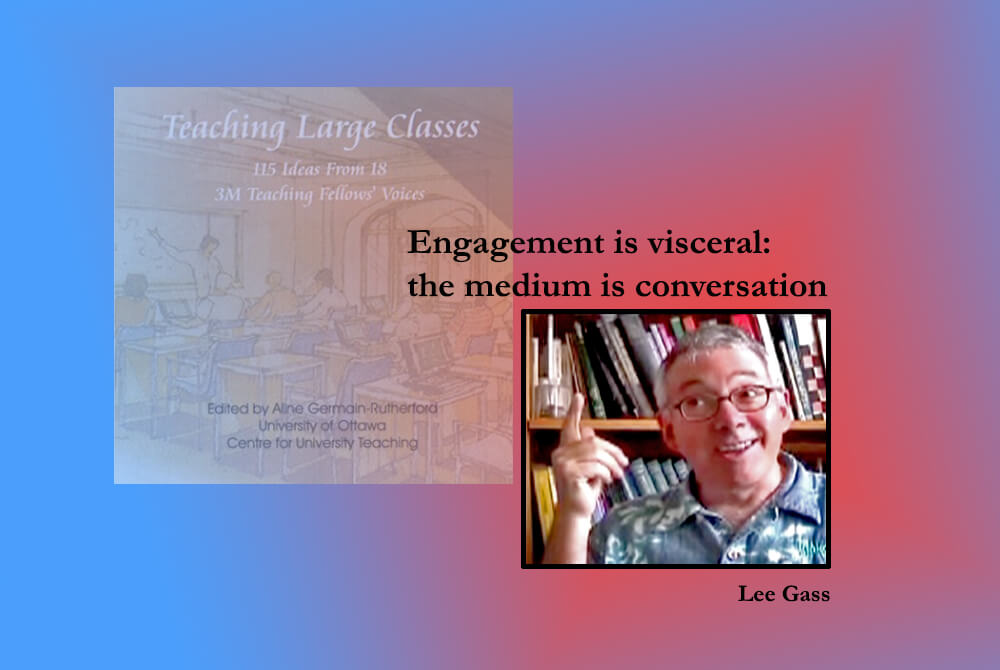The Council of 3M
National Teaching Fellows
produces a range of materials to
help teachers improve their teaching. Among
them is a DVD-production project in which 18 3M
Fellows recorded 118 short video clips about many
aspects of teaching large classes. One of mine is
here. All 118 clips are on the Council website
as well as many other useful videos.
In one of my
clips, Engagement is Visceral,
I argue that to say that students are
engaged in class activities is much more
than to say that words, information, and ideas
flow back and forth – so-called head stuff. It also
lives, breathes, and expresses itself, second by second,
in what I call ‘the meat’, in our bodies – – vague tensions,
subtle shifts in posture and colour, eyebrows, shoulders,
fingers, hands, muscles around the eyes. To be fully
engaged, I argue, even in improbable places like
large classrooms, is for all of that to be part
of the conversation. Minds sling words
back and forth, bodies dance,
and conversations are
the richer for it.
My
task in that part of
the interview was to paint
as clear a picture as I could of that
happening in whole rooms full of people,
150 in the example I used. The second
clip is closely related. Starting with the
challenge of making it click with 150
at time, I show how to simplify
that challenge and make
it manageable.
On the
first day of first year
university courses, especially in
early morning, few students have seen
each other before. Yet, as I suggested in the
clip, magic can happen sometimes, even that
early in large courses. Sometimes, everyone
becomes so fully engaged that the air
is electric with shared intention
and commitment and
everyone can
feel it.
It is one
thing we need as students
and educators, it is what most of us
are looking for, and the feeling and the
magic remain elusive. The feelings
are in the meat.
As I edited this story,
I realized that my hour-long talk
Making Magic Together grew directly
out of my comment above that
‘magic can happen
sometimes’.
Edited June 2022


